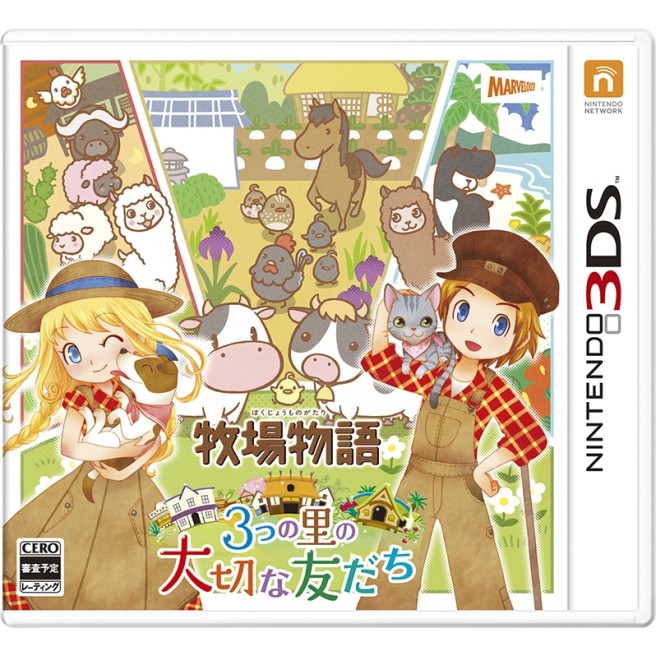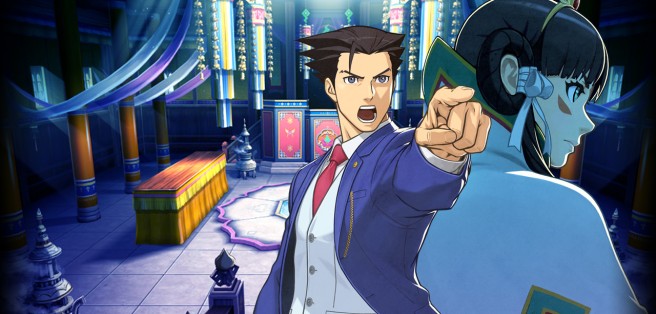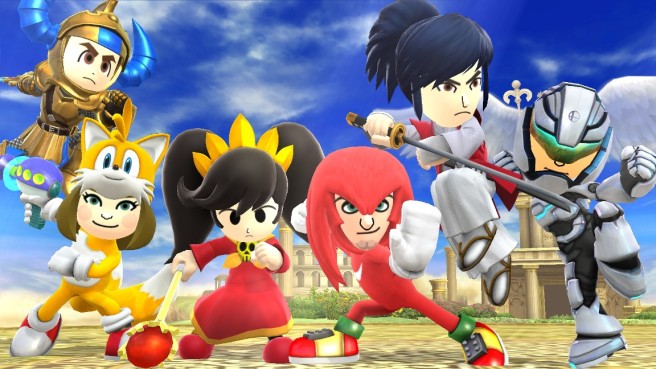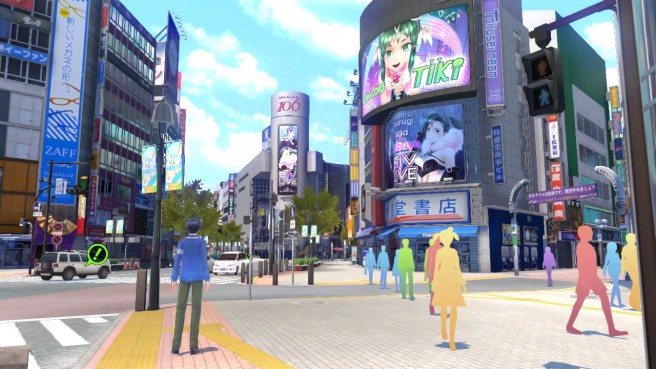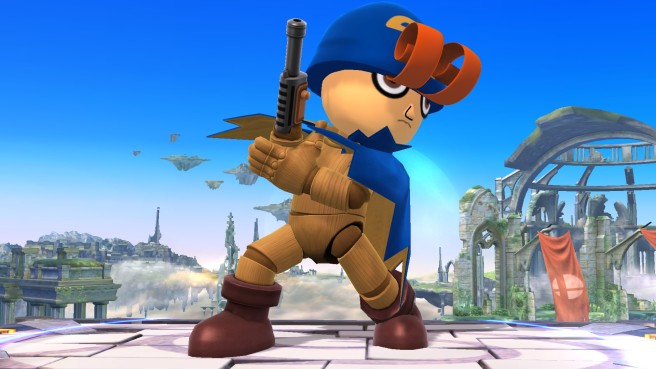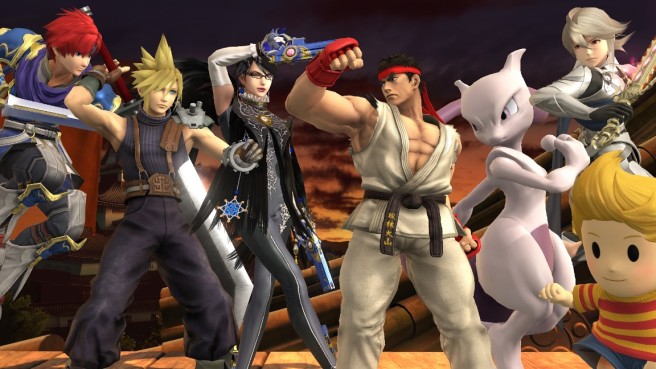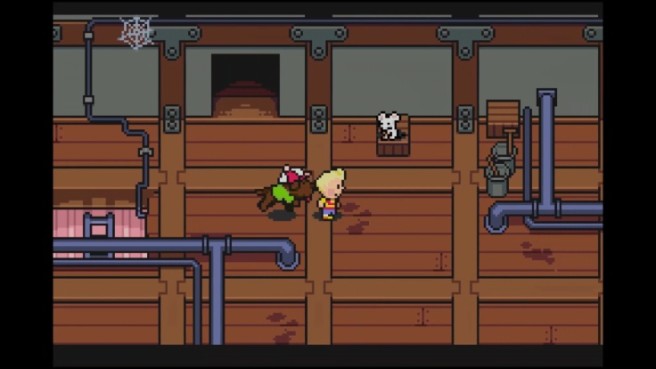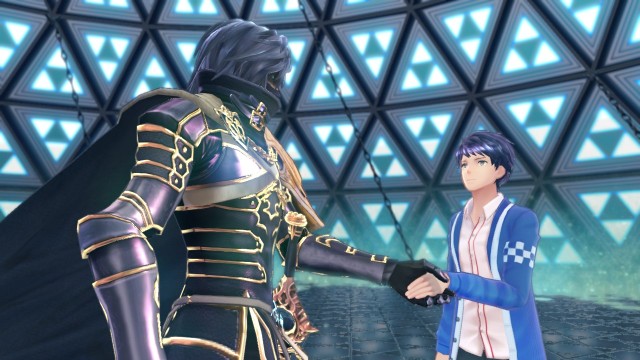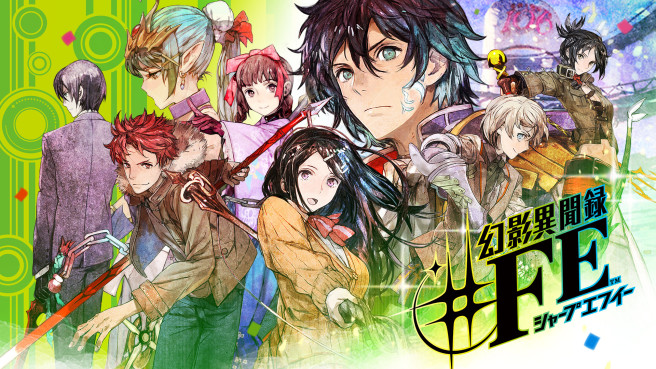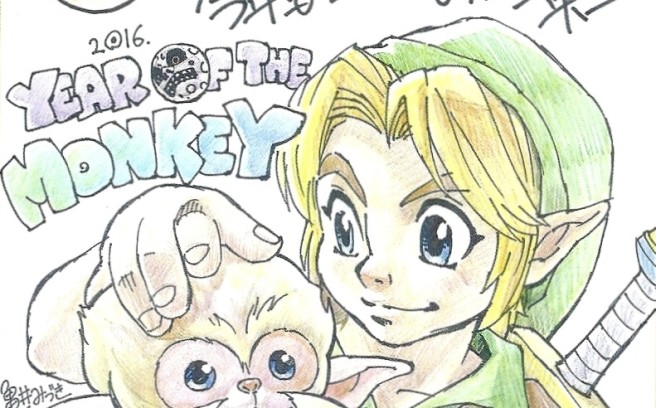Story of Seasons: Good Friends of Three Villages details and scans
Posted on 9 years ago by Brian(@NE_Brian) in 3DS, Images, News | 0 comments
This month’s issue of Nintendo Dream has some coverage of Story of Seasons: Good Friends of Three Villages. Friends of Free Villages posted a translation of the article, and we’ve rounded up the details below. We also have a gallery with Nintendo Dream’s scans.
– As in previous games, the maker will turn wool and other materials into thread
– Ex: materials necessary to make white cloth: sheep’s wool and a white flower
– Cooking recipes shown for a couple of dishes
– Milky Salad requires milk (any type) and a vegetable (any type). Dish effects: stamina will slowly replenish.
– Kenchin-jiru requires daikon (Japanese radish), carrot, burdock root, and shiitake. Dish effects: you can walk faster.
– Nasi Goreng requires rice, onion, shrimp (any type), and soy sauce. Dish effects: your stamina will deplete more slowly.
– You don’t make clothing yourself
– Every village has places where you can get clothing made for you
– You bring the materials, and the shop owner will do the rest
– Tsuyukusa Village is home to a large warehouse-like building called “Daikoku Stores”
– This is named after the Shinto god of wealth, commerce and trade
– A clothing store, dry goods shop, and food store can be found in the Daikoku Stores
– Hinata has two older brothers, two younger brothers, and one younger sister
– He’s not the eldest; he’s a middle child
Capcom shares interesting insight into Ace Attorney – Dual Destinies, Ace Attorney 6
Posted on 9 years ago by Brian(@NE_Brian) in 3DS, DS, General Nintendo, News | 6 Comments
Last month’s issue of Nintendo Dream has a big interview with Takeshi Yamazaki and Motohide Eshiro from Capcom about all things Ace Attorney. The two developers provided some interesting insight into Phoenix Wright: Ace Attorney – Dual Destinies as well as Ace Attorney 6. It’s several pages long, so we went ahead and made a summary.
The most difficult aspect of developing Phoenix Wright: Ace Attorney – Dual Destinies was moving platforms from DS to 3DS. At the time, Capcom hesitated as to whether to keep the series in 2D or make it 3D. Because of the 3DS’ selling point had been about three-dimensional views, they decided to pursue the latter option.
Something similar happened with Ace Attorney Investigations. That title took more time to develop because they needed to create a new gameplay mechanism from scratch. However, when Capcom then made Ace Attorney Investigations 2, they already had the base game set up so they could focus more on the scenario.
Sakurai on Smash Bros. Wii U/3DS DLC stages and Mii Fighter outfits
Posted on 9 years ago by Brian(@NE_Brian) in 3DS, News, Wii U | 6 Comments
This month’s issue of Nintendo Dream has a lengthy interview with Masahiro Sakurai, director of Super Smash Bros. for Wii U/3DS. He discussed the two games in general as well as specific topics like DLC fighters.
We now have an overview regarding what Sakurai shared in terms of DLC stages and Mii Fighter outfits. For a summary of this portion of the interview, head past the break.
Genei Ibun Roku #FE devs on reproducing Shibuya, game structure, scrapped battle intro idea
Posted on 9 years ago by Brian(@NE_Brian) in News, Wii U | 14 Comments
Several developers behind Genei Ibun Roku #FE were interviewed in Nintendo Dream’s February issue. Surprisingly, the March edition has another interview with the team as well. The lengthy lineup of staff who participated include producer Hitoshi Yamagami (Nintendo), director Kaori Ando (Nintendo), producer Shinjiro Takata (Atlus), director Eiji Ishida (Atlus), chief director Wataru Hirata (Atlus), art director Fumitaka Yano (Atlus).
Nintendo Dream’s latest feature isn’t quite as interesting as last month’s where we learned that Genei Ibun Roku #FE was originally planned for 3DS and considered a wide array of genres. But there are still quite a few juicy tidbits. After the break, you can see what the developers had to say about reproducing Shibuya, the game structure, and an idea for battle intros that was scrapped.
Sakurai considered Geno for Smash Bros.
Posted on 9 years ago by Brian(@NE_Brian) in 3DS, News, Wii, Wii U | 189 Comments
There’s a pretty big interview with Masahiro Sakurai in this month’s issue of Nintendo Dream. We already covered quite a bit of it earlier today, but there’s additional news emerging from the magazine as well.
As spotted by Source Gaming, Sakurai states that he wanted Geno to be a playable fighter in Brawl, and apparently Wii U/3DS as well. He also acknowledged that Geno is popular, especially when talking about old characters.
We did end up with a Geno costume in Super Smash Bros. for Wii U and 3DS. Obviously that’s very different from a playable fighter, however. Maybe we’ll see him in the franchise’s next entry?
Sakurai on ending Smash Bros. DLC, wanting to appeal to all players
Posted on 9 years ago by Brian(@NE_Brian) in 3DS, News, Wii U | 101 Comments
This month’s issue of Nintendo Dream features an interview with Masahiro Sakurai. During the discussion, the Smash Bros. director talked about ending DLC in the Wii U and 3DS games, including how development differed with the main title and why now is an appropriate time to stop adding characters. There’s also quite a bit of discussion about how Sakurai wants Smash Bros. to appeal to all types of players.
Head past the break for the interview breakdown. Please note that this particular post is more of an abridged/summary version rather than a word-for-word translation.
Shigesato Itoi on Mother 3’s development and much more
Posted on 9 years ago by Brian(@NE_Brian) in General Nintendo, News | 3 Comments
Late last year, an event for the Mother series was held in Japan. Nintendo Dream was in attendance, and spoke up with well-known designer Shigesato Itoi.
In the interview, Itoi commented on topics such as Mother 3’s development (cancelling the project on the Nintendo 64 before moving onto the Game Boy Advance), the series in general, the fans, and plenty more.
We now have a complete translation of Nintendo’s Dream’s piece. To read it in full, head past the break.
More: interview, Mother 3, Nintendo Dream, Shigesato Itoi, top
Genei Ibun Roku #FE devs on how the setting and Fire Emblem characters were chosen
Posted on 9 years ago by Brian(@NE_Brian) in News, Wii U | 19 Comments
Last week, we posted some translated excerpts from Nintendo Dream’s Genei Ibun Roku #FE interview. It’s a very interesting read since it gives you more of a clear picture about the project’s origins and how the game eventually turned into an RPG. If you missed it, be sure to check it out here.
We have a few final excerpts from Nintendo Dream’s piece today. Primarily, today’s topics include an in-depth explanation as to how the setting was decided upon, and how the team determined which characters from Fire Emblem to include.
Head past the break for the translation. The comments are from the interview with producer Hitoshi Yamagami (Nintendo), director Kaori Ando (Nintendo), producer Shinjiro Takata (Atlus), director Eiji Ishida (Atlus), chief director Wataru Hirata (Atlus), and art director Fumitaka Yano (Atlus).
Genei Ibun Roku #FE devs – thought about different genres, considered 3DS, more
Posted on 9 years ago by Brian(@NE_Brian) in News, Wii U | 39 Comments
In late December, Nintendo published Genei Ibun Roku #FE in Japan. Nintendo Dream thought it would make sense to speak with the game’s staff now that development is complete. The Japanese magazine caught up with producer Hitoshi Yamagami (Nintendo), director Kaori Ando (Nintendo), producer Shinjiro Takata (Atlus), director Eiji Ishida (Atlus), chief director Wataru Hirata (Atlus), and art director Fumitaka Yano (Atlus). That’s quite a number of developers indeed!
We’ve translated a lengthy part of the interview below. The excerpts are very insightful, as the developers spoke about how they thought about different genres for the project, considered 3DS (even making a project plan), and more.
New Year’s dev drawings – Zelda: Majora’s Mask 3D, Kirby, Theatrhythm, more
Posted on 9 years ago by Brian(@NE_Brian) in General Nintendo, Images | 2 Comments
Japanese magazine Nintendo Dream is celebrating the start of 2016 in its latest issue. Various game developers and other key members related to the industry contributed handmade drawings, including representatives from Nintendo, Capcom, Square Enix, and more.
For the final time, we’re sharing the various images featured in Nintendo Dream. The thrid set of drawings, rounded up in the gallery below, features Zelda: Majora’s Mask 3D, and more. We also have text accompanying the shots (including many developer comments!) after the break.
